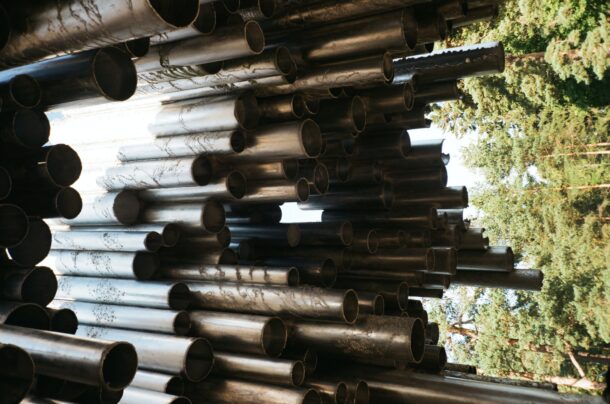It doesn’t matter if you are a contractor or tradesman; pipes are a vital part of many industries, from plumbing to manufacturing. It is used to transport liquids, gases, and sometimes solid materials throughout a system. Depending on the intended application, a pipe can be produced using different methods. There are many different types of pipe on the market today, and each has its own unique advantages and disadvantages. In this article, we’ll be taking a closer look at two of the most popular types of pipe: seamless and welded.

Seamless pipe is made by passing a hot steel rod through a die to form a hollow tube. The tube is cooled and pulled through a second die to achieve the desired pipe diameter and wall thickness. This method is suitable for producing small-diameter pipes with thin walls.
Welded pipe is made by heating and shaping steel sheets or plates into the desired pipe shape and then joining the edges of the plates together using welding. This method is suitable for producing larger-diameter pipes with thicker walls.
Seamless Pipes
There are several differences between seamless and welded pipes.
Seamless pipe is generally more expensive to produce due to the more complex manufacturing process. Welded pipe is generally less expensive, as it is a more straightforward process.
Seamless pipe is also more resistant to corrosion and can withstand higher pressures. Welded pipe is more susceptible to corrosion and unsuitable for high-pressure applications.
When it comes to industrial applications, both have their advantages and disadvantages that make them ideal for different projects. Here is a look at the major differences between seamless and welded pipe to help you decide the best option for your needs. Depending on the application, either seamless or welded pipe can be used. Seamless Pipe Seamless pipe is made from a single piece of steel that is heated and formed into a pipe shape. No welding or joining is required, making it a very strong and durable option. It can be used for transporting high-pressure fluids, such as oil and gas, and is often found in power plants and other industrial settings. The main disadvantage of seamless pipe is that it is costly to produce. The process is complex and time-consuming, which drives up the cost. It is also difficult to repair if it becomes damaged. Seamless pipe is often used for high-pressure applications, such as in the oil and gas industry, as it can withstand higher pressures and is more resistant to corrosion.
Welded Pipes
Welded pipe is often used for low-pressure applications, such as in plumbing. It is made by welding two pieces of steel and joining them together. This makes it a less expensive option than a seamless pipe. It is also easier to repair if it becomes damaged. The downside of a welded pipe is that it is less strong than a seamless pipe. The welding can create weak spots that can fail under high pressure. Welded pipe is also more likely to leak than a seamless pipe. The welded pipe also has its advantages, however. It is usually cheaper to produce than a seamless pipe and can be easier to work with. Welded pipe is also more versatile, as it can be shaped into different configurations.
Finally
When it comes to choosing between seamless and welded pipe, it depends on the application. Seamless pipe is the stronger option but is also more expensive. Welded pipe is less expensive but less strong. Ultimately, the best choice for your project will depend on your specific needs and budget. If you still need to decide which type of pipe to use, it’s always best to consult a professional. They’ll be able to help you choose the right kind of pipe for your specific needs.




Join the conversation: